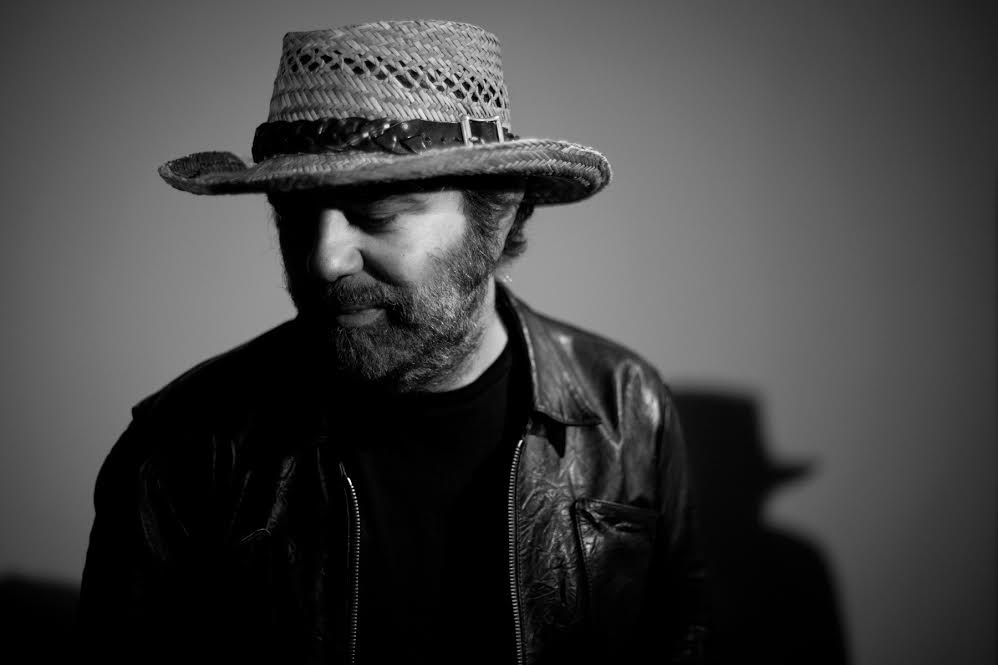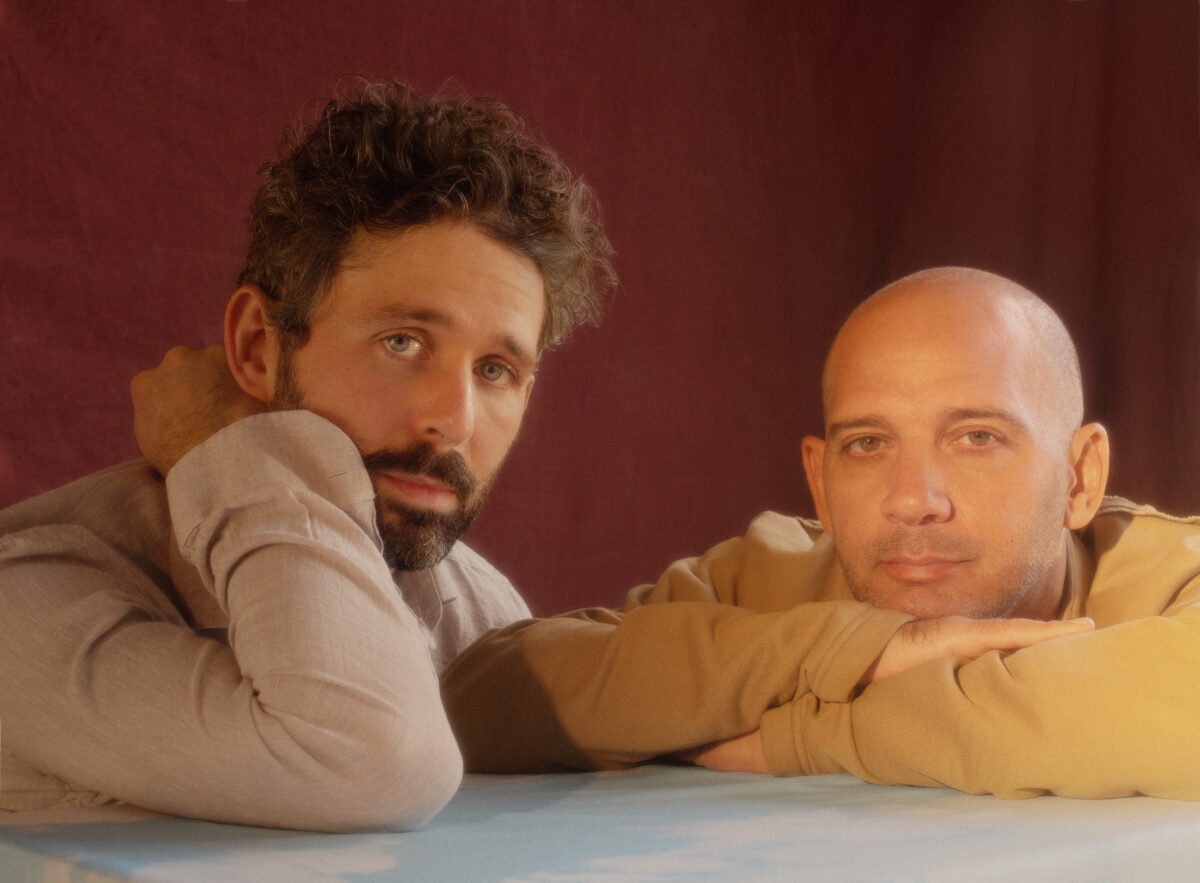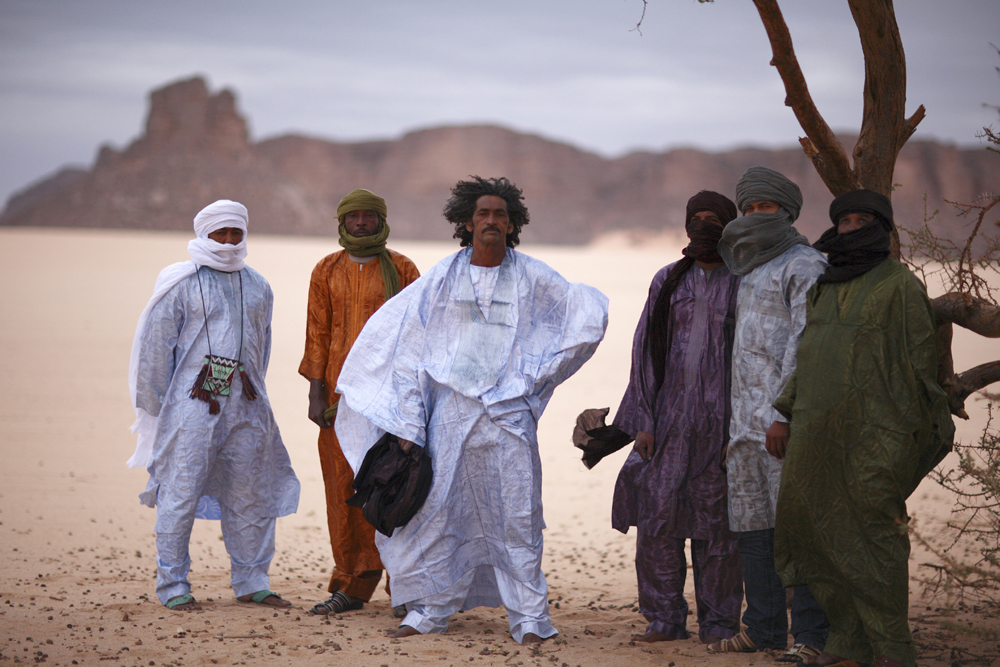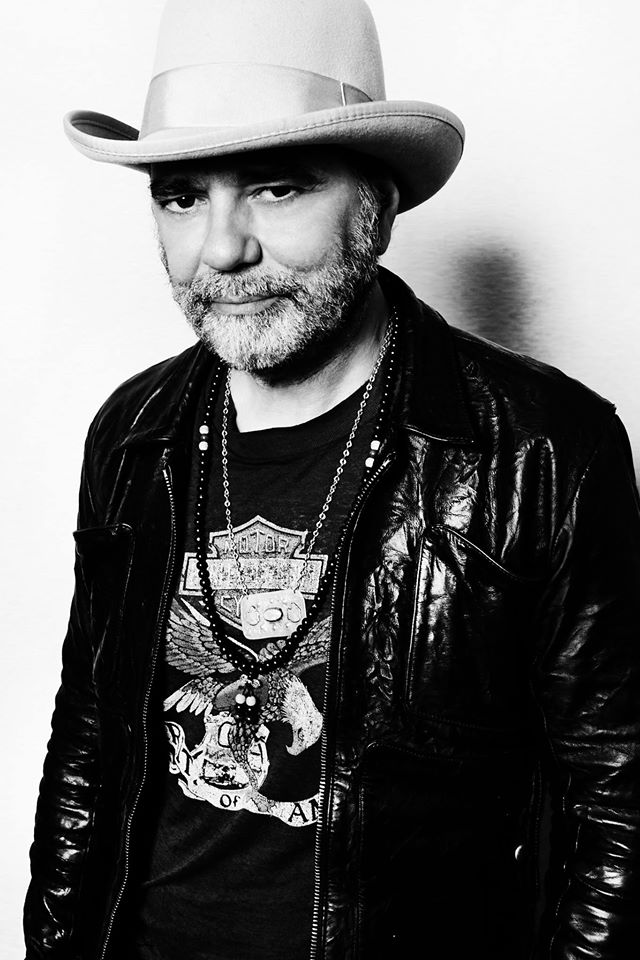Nov
10
Mon November 10th, 2014
8:00PM
Minimum Age: 18+
Doors Open: 7:00PM
Show Time: 8:00PM
Event Ticket: $40
Day of Show: $45
*ON-LINE SALES HAVE ENDED, TICKETS WILL BE AVAILABLE AT THE DOOR*
WFUV, Le Poisson Rouge & Anti Records proudly present Antithesis-An evening to celebrate forward thinking music with full sets by Daniel Lanois, Tinariwen, The Antlers, & Lonnie Holley.
**This is a general admission event at the Brooklyn Masonic Temple: 317 Clermont Ave #4, Brooklyn, NY 11205**
**ABSOLUTELY NO WILL-CALL NAME TRANSFERS/EXCHANGES WILL BE HONORED FOR THIS PERFORMANCE**
4
Daniel Lanois

The cover art to Flesh And Machine – the new album by gifted musician, renowned producer and ambient pioneer DANIEL LANOIS – contains a curious image: a baby with cybernetic antennae. The child represents LANOIS himself. He explains: “The cover shows a boy who is looking for something that’s never been heard before. He’s my little seeker, he represents the bit of me that’s always in the laboratory experimenting, looking for new sounds and sensations.”
But the image is apt in another way. Flesh And Machine, his third album for ANTI-, represents nothing short of a total artistic rebirth. LANOIS has been involved in playing, recording and producing music for four decades now. In that time he helped push the ambient genre forward into celestial new territory as Brian Eno’s foremost protégé; he has recorded landmark albums for U2 and Peter Gabriel and has helped to revitalize the sonic dimensions of Bob Dylan and Neil Young. But this marks the first time he has truly deployed every sonic weapon in his arsenal in hopes that it may reach the position of headphone album of the year.
LANOIS has a refreshingly optimistic attitude toward his craft and the creative potential it still holds: “I’m always heading for the future and I’m always hoping I’m going to find the next dimension of sound. It’s my job to raise the spirit of sound. I’ve been able to do it a number of times in the past on other people’s records. Well, it’s still my job today to raise that spirit of sound and I’d like to think that I’ve done it on this record.”
Flesh And Machine was initially conceived as an ambient album, and tracks such as ‘Forest City’ take the classic Brian Eno albums that he worked on (“Ambient 4: On Land” (1982) and “Apollo: Atmospheres And Soundtracks”(1983) as a wonderful bedrock to stand on to see the sonic future. His guitar is processed to the point where it is no longer possible to tell what the source instrument is. The album bristles with new ideas. The softly spoken Canadian spent countless hours processing an array of source sounds – steel and electric guitars, piano and human voice – to create the sound palette that is Flesh and Machine.
Talking about the track ‘Sioux Lookout’ he says: “It is meant to be a native chant or a cry for all living things. I wanted to mix the sound of humans with the sound of animals. But they’re not animal sounds really – I’ve created all of these sounds myself but that’s kind of my aim, you can’t actually tell where these sounds came from. I got to this place of mysterious sounds and invented a new sonic language.”
He continues: “The track ‘Two Bushas’ is very symphonic and it almost sounds like someone is conducting it but the tones and textures can’t be pinpointed. You wouldn’t say, ‘Oh, yeah, that’s a flute and that’s a cello.’ The result is a symphonic one and it appeals to that part of us that responds to orchestral music but with sounds we’re not used to hearing. On a good day, if I’m feeling big-headed, I like to think that I’m taking symphonics to the future.”
One of the many standout tracks on the record is called simply ‘The End’ and is supposed to represent “a final protest song, the closing of a chapter or the burning down of an edifice and the rising of a phoenix. It’s hellfire, avalanche, collapse and tsunami: The End essentially!” He continues: “If you’re expecting nothing but ambient music you’ll be surprised… ‘The End’ is not meant to be peaceful and textural by any means. I think it has a lot of rebellion in it. I’m on guitar and Brian Blade is on drums and then everything else is processing. Brian and I have played together for a long time. Years ago I was taking a walk in New Orleans with Iggy Pop and we heard this amazing drumming coming out of this cafe. So we went inside and there he was… young Brian Blade ripping it up on the drums. And I’ve been working with him ever since; he’s one of the greatest human beings I know.”
The stunning polyphony and cascades of ultra-pointilistic sound on this track all come from two humble sources: guitar and drums which are then sampled, sliver by tiny sliver, processed and placed carefully back into the track. All of these countless samples, no matter how radically they are changed, have to be placed back into their surroundings in a harmonically correct manner, so his process is not only highly technical but compositionally very astute as well. His method is so dazzling in places that sometimes sounds as if Burial, Amon Tobin, Prefuse 73 or Four Tet were producing a modern fusion LP. However, these effects were achieved by a personal evolution which was perhaps in some ways parallel but far, far removed as LANOIS is blissfully unaware of who any of these producers are…
He playfully doffs his cap to both his mentor Brian Eno and the intensely productive period they worked together in the 1980s on the track ‘My First Love’. Keen-eared listeners might recognize the beautiful celestial tone on the track: “I used the same Suzuki Omnichord on ‘My First Love’ as we used on ‘Deep Blue Day’ – the track from “Apollo…”which was used in “Trainspotting” during the infamous toilet bowl scene…” Talking about what he learned from Eno he says: “Above any particular technique, I learned to be devoted to a direction. And I made a pact to myself after working with him that I would never do anything musically that I didn’t want to do again – which was a real turning point for me.”
This spirit of artistic restlessness is something that he still feels fully today, some thirty years later. He has already prepared songs from Flesh And Machine to be performed live by a trio including himself, where both the playing of instruments and the sampling, dubbing and processing will happen in real time on stage: Our crescendos and our risings very much belong to the night, never to be played the same way again.”
DANIEL LANOIS is still raising that spirit of music and still opening up doors to the unknown.
The Antlers

The Antlers are Peter Silberman and Michael Lerner. In 2021 the band released their first album in seven years titled Green to Gold, a bucolic record which Pitchfork described as “a post-rock orchestra playing around a campfire… the sound of hard-won peace of mind, rendered in the lightest brushstrokes.”
The release was followed by the Losing Light EP, a reimagining of four tracks from Green to Gold. Peter Silberman has also co-produced the recent Wild Pink album ILYSM, marking Silberman’s first foray into producing a record for another artist outside of the context of The Antlers or his solo work.
Since 2021, The Antlers have been releasing stand-alone singles “I Was Not There,” “Ahimsa” and a Brett Arnold reworking of “Green to Gold”.
Tinariwen

The desert is a place of hardship and subtle beauty, a stark world that reveals its secrets slowly and carefully. Life in the desert is resilient and strong, and the people are gentle giants among the sand, storms, and sun. For Saharan blues band Tinariwen, the desert is their home, and their hypnotic and electrifying guitar rock reflects complex realities of their homebase in North West Africa.
They are Tuareg, descended from nomadic people who have wandered the dunes for millennia, but the music of Tinariwen travels too, reverberating far from dusty plains of Mali. Their 2011 album Tassili, recorded in the Algerian desert — in a tent and under the stars with a esteemed cadre of musicians including Nels Cline and TV on the Radio’s Tunde Adebimpe and Kyp Malone — won a Grammy Award for Best World music. Now their new record Emmaar returns to their roots, delivering stripped-down dirges, effervescent anthems, and above all, a return to simplicity and honesty.
Due to political instability in their country, the band recorded away from their homeland for the first time, setting up shop in another desert: Joshua Tree, California. “This is the first time we are recording out of Africa it has to be in a desert,” says bassist Eyadou Ag Leche. “We would like to live in peace in the North of Mali, but this is very difficult, there is no administration, no banks, no food, no gas. Joshua Tree is in the high desert of California, we love all the desert, these are places where we feel good to live and to create.”
Recorded over three weeks in studio built in a house in the region known for spaced-out rock ‘n’ roll and psychedelic cowboy folk, Emmaar showcases an organic feel from the rolling hand drums and meandering guitars of album opener “Toumast Tincha” chants to the galloping beats of the forward-marching “Chaghaybou.” “We were not in a proper studio or outside in the desert like Tassili,” Ag Leche says, “we built a studio in a big house in Joshua Tree. Everybody in the same room, with no separation. We wanted something which sounded natural and live.”
Along with the original members who founded the group in the 1980s (vocalists and guitarists Ibrahim Ag Alhabib, Abdallah Ag Alhousseyni, and Alhassane Ag Touhami) and the younger generation who grew up listening to the band and joined in the 1990s (multi-instrumentalist Eyadou Ag Leche, guitarist Elaga Ag Hamid, and percussionist Said Ag Ayad), a group of American musicians appear on the album. Accompanied by Red Hot Chili Peppers guitarist Josh Klinghoffer, Matt Sweeney from Chavez, Nashville fiddler Fats Kaplin, and poet Saul Williams, Emmar is a richly layered listen solidified by atmospheric textures and gritty guitar-work.
Recording away from Mali created a nuanced sound that Ag Leche says could have been inspired by the new landscape and American experiences. “We think that the air is different, the moods are different, recording in America and doing a small tour in California, Arizona, New Mexico and Texas, brought us in a special mood, the landscape, the big space, the South. We watched Western movies, during the recording and ate burritos, and the engineer who worked with us is from Nashville, so I supposed it change the way our music is captured.”
But while the location was new, their music still focused on life in the Sahara. “The new songs of this album talk about what we feel today,” Ag Leche says, “the Tuareg issues, the need of being recognized by the administration of our country. But also some poetic ways of describing our feelings. The Tamasheq language is using a lot of metaphors, and it comes from the old traditional tuareg poetry that tells about the Tuareg tribes, their adventures in the desert, the wars, but also the beauty of the desert, the sky, the lands, and the Assouf, our blues, and nostalgia of an old time.”
If Tinariwen pays homage to old times, it’s because their present is in flux. Turmoil has embroiled their region once again, as governments and powers rise and fall, almost with the regularity of the seasons. “It is going to be a very long way to peace in the north,” says Ag Leche. “It’s been up and down. The Islamist are all around in the North but also some thieves and bad people taking advantage of this chaos to frighten our people.”
Mali, it seems, is the forgotten, or ignored, brother of the Arab Spring, but on Emmaar, Tinariwen tells about the trials of their people and tells the world of the plight of their families. “The ideals of the people have been sold cheap, my friends / A peace imposed by force is bound to fail / And gives way to hatred,” Ag Leche sings on “Toumast Tincha.”
Though the band’s success has brought them around the world, they rarely can go home, facing threats of incarceration and death by thugs in power. But like creatures of the desert, they adapt and carry on, after all, Tinariwen is a band born into chaos.
“Our people are used to moving all the time,” Ag Leche says, “since the late 60’s we have always been moved between Mali, Algeria, Libya, Chad, Mauritania, Niger. Nowaday a lot of our families moved to the Algerian border or close to Niger because of the situation with the Malian administration. We are refugees in a lot of countries in Africa.”
Tinariwen’s own story burgeons with myth and mythos in their home country and beyond. Their tale is the stuff of legends. Founding member Ibrahim Ag Alhabib, grew up in desolation in Mali, where he witnessed his own father’s death at the age of four. Later, after seeing a western film, he built his first guitar from a bicycle wire, a stick and a tin can. The band was founded in the 1980’s in Tureg camps in Libya, where the nomadic peoples had relocated to find work and a new life away from their homeland of the Sahara. Disillusioned by the promises of Quaddafi at the time, the Tuareg became restless again and longed for home. But the interaction with city life yielded unexpected consequences, the became exposed to Western music — most notably the guitar-driven anthems of Jimi Hendrix and the American Blues — which they mixed with their own soulful dirges which they’d perform in the camps by the fire with battery-operated amps. When revolution broke out back in Mali, they left Libya behind, hung up their guitars and picked up guns to fight for the Tuareg independence. When the dischord died down, the band returned to music, delivering songs imbued with aching beauty and lonesome poetry. Their music was bootlegged and traded around the region, earning them a devout following. Then in the late 1990s, they were discovered by Western musicians and for the first time, their songs left the Sahara and were introduced to the world. For the next ten years, the nomads now traveled the world, performing at nearly every notable festivals and venues around the globe, providing the world with a taste of the aching beauty and lonesome pleasures of Saharan Assouf.
Tinariwen official site
Tinariwen on Facebook
Tinariwen on Twitter
Tinariwen on YouTube
photo credit: Marie Planeille
Lonnie Holley @ Brooklyn Masonic Temple

Lonnie Holley was born on February 10, 1950 in Birmingham, Alabama. From the age of five, Holley worked various jobs: picking up trash at a drive-in movie theatre, washing dishes, and cooking. He lived in a whiskey house, on the state fairgrounds, and in several foster homes. His early life was chaotic and Holley was never afforded the pleasure of a real childhood.
Since 1979, Holley has devoted his life to the practice of improvisational creativity. His art and music, born out of struggle, hardship, but perhaps more importantly, out of furious curiosity and biological necessity, has manifested itself in drawing, painting, sculpture, photography, performance, and sound. Holley’s sculptures are constructed from found materials in the oldest tradition of African American sculpture. Objects, already imbued with cultural and artistic metaphor, are combined into narrative sculptures that commemorate places, people, and events.
Holley did not start making and performing music in a studio nor does his creative process mirror that of the typical musician. His music and lyrics are improvised on the spot and morph and evolve with every event, concert, and recording. In Holley’s original art environment, he would construct and deconstruct his visual works, repurposing their elements for new pieces. This often led to the transfer of individual narratives into the new work creating a cumulative composite image that has depth and purpose beyond its original singular meaning. The layers of sound in Holley’s music, likewise, are the result of decades of evolving experimentation.
In the early 2000s, Holley’s music caught the attention of Matt Arnett, the son of art collector Bill Arnett, who has been collecting Holley’s art since the 1980s. In 2010, Matt set up an impromptu performance by Holley at his home for Dust-to-Digital founder, Lance Ledbetter. Deeply moved by Holley’s keyboard playing and singing, Ledbetter insisted on getting Holley into a recording studio as soon as possible. The result was the album Just Before Music, which features Holley’s first studio recordings made in 2010 and 2011. More recordings are continuing to be made to celebrate and to document one of America’s most compelling musicians.


